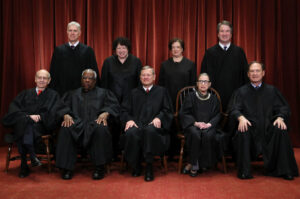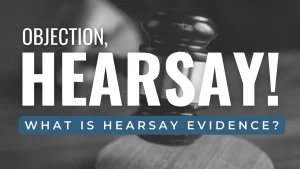What to Wear to Traffic Court
Going to traffic court can be stressful enough without worrying if your outfit is appropriate. What you wear can actually impact how a judge or other court officers perceive you, so you’ll want to make the right impression. This article will explain why your traffic court attire matters, provide specific guidance for both men and women on what is and isn’t allowed, discuss exceptions and extra considerations, give shopping tips for courtroom-appropriate clothes, cover what to do the day before and day of court, and answer common questions.
Why Traffic Court Attire Matters
You likely want the judge, attorneys, and other court staff to take your case seriously so dressing professionally and neatly shows respect. Proper attire also makes you look more credible. Additionally, many courts have dress codes specifying acceptable clothing so you could risk being denied entry or found in contempt for ignoring the rules. Taking the time to dress appropriately proves you’re making an effort.
Research the Dress Code
Before stressing about what to wear, check if your specific court has a published dress code or attire guidelines. Many state the rules outright on their website or in paperwork about your hearing date. If unsure, you can call the courthouse ahead of time and ask what is appropriate so there’s no confusion on the day. Some general standards apply across most traffic courts but the specifics can differ.
What to Avoid Wearing to Court
No matter the individual court’s policy, there are some universal no-go’s when dressing for traffic court:
- Torn, dirty, or distressed clothing: Make sure all garments are in good shape.
- Crop tops, tank tops, halter tops, or anything revealing: Your top should fully cover your chest and be an appropriate cut.
- Short skirts or shorts: Length should extend past your fingertips.
- Sweatpants, leggings, workout clothes: Even nice leggings typically don’t cut it.
- Flip flops or dirty sneakers: Shoes should be presentable.
- hats: Hats are rarely permitted in court unless for religious reasons.
- Clothing with text or images: Avoid anything distracting or controversial.
- Costumes: No dress-up attire even if making a statement.
Use common sense when deciding if something could be interpreted as too casual, provocative, or disrespectful. You want the focus on your case not your outfit.
Guide for Men: What to Wear
Shirts
Opt for a collared dress shirt, polo, or sweater. Button-downs with long or short sleeves work well. Avoid graphic tees or anything too casual. Tuck shirts in and make sure they stay neat.
Pants
Wear dress pants or pressed khaki pants. Dark colors like black, navy, or grey are best. No jeans or cargo pants even if dressier ones. Make sure pants fit well—not overly tight or baggy.
Shoes and Accessories
Complete the look with dress shoes in black or brown leather. Loafers or oxfords are safe bets. Sneaker alternatives should have a more professional design. Plain socks in neutral colors keep the overall aesthetic polished. Don’t wear a hat, but modest jewelry like a watch and wedding band are fine.
Suit or No Suit?
A full suit and tie is not strictly necessary unless your court requires it. But a sport coat or blazer over a collared shirt with nice pants qualifies as business-casual appropriate for traffic court.
Guide for Women: What to Wear
Tops
Modest blouses, sweaters, cardigans, or knit tops work well. Pick neutrals or darker shades that appear professional. Blazer-style tops can look sharper too. Anything dressier than a basic t-shirt is likely fine.
Bottoms
Similarly to men’s wear, women should opt for dress pants, trousers, khakis, or knee-length skirts in fabrics like twill or wool versus casual cotton. If wearing a skirt, make sure leggings or tights underneath adhere to dress code rules.
Dresses and Skirts
Simple sheath dresses are court-appropriate. Whether dresses, skirts, or jumpsuits, aim for no higher than 1-2 inches above the knee when seated. Darker solid colors tend to appear smartest.
Shoes and Accessories
Closed toe dress heels or flats should be your first choice over sandals or slip-ons. Neutrals like black, navy or nude complement most outfits. For accessories, small stud earrings plus watches, rings, necklaces are fine as long as not flashy or noisy.
Exceptions and Extra Considerations
The expected courtroom attire doesn’t necessarily apply in all circumstances. Here are a few situations with slightly more flexibility:
Weather Conditions
If attending traffic court under extreme weather like sweltering heat or snowstorms, the court staff understands dressing practically. But try to remain professional as possible for conditions.
Religious Accommodations
Certain religious clothing like headscarves, kippahs, turbans are allowed if worn for genuine spiritual reasons. Courts make reasonable religious dress exceptions.
Physical Limitations
Individuals unable to wear typical court attire due to medical conditions or disabilities may be accommodated on a case-by-case basis. Contact the court ahead of time if this applies to you.
How to Shop for Courtroom Attire
Finding appropriate ensembles doesn’t have to cost a fortune or require shopping sprees. Here are some options if your regular wardrobe needs court-approved reinforcements:
Budget Options
Check stores like Old Navy, Target, Walmart, or thrift shops for inexpensive dress separates. For more formal pieces, department store sales racks can yield blazers, trousers, sheath dresses all meeting dress code.
Rentals
Services like Rent the Runway allow temporarily renting formal, business casual, and cocktail attire at reasonable costs. If rarely needing court dress clothes, renting prevents wasting money on new items.
Day Before Courtroom Tips
Once you’ve got your traffic court outfit picked including having it cleaned and pressed if needed, follow a couple pre-hearing tips:
- Lay out everything you’ll wear the night before so it’s ready to go
- Set alarms allowing plenty of time to get dressed unrushed
- Confirm you have directions to the court and parking details handled
- Have your paperwork, ticket info, driving credentials easily accessible
Day of Court Etiquette
You’re dressed the part but should further conduct yourself appropriately upon arrival:
- Arrive early to ensure you have time to get through security
- Turn cell phones completely off and avoid gum chewing
- Be patient and polite with all court staff
- When the judge enters, stand until told to be seated
- Only speak when addressed and keep responses direct and honest
Making a good impression on the traffic court judge can possibly positively influence their ruling so dressing and acting respectfully better your chances.
Conclusion
Traffic court attire considerations stem down to projecting an image that you take the charges seriously. Dressing too casually risks conveying a flippant attitude which will not fare well. Following the outlined guidelines on what to wear paired with conscious etiquette provides the best opportunity to make your case without unnecessary obstacles. When in doubt, it’s wise to err on the formal professional side. With smart preparation for your court date, you can dress confidently and focus on achieving your ideal legal outcome.
FAQs
What is the best color to wear to traffic court? Neutrals and darker shades appear most professional like black, gray, navy or tan. Bright prints or patterns risk looking too flashy.
Can I just wear normal clothes to traffic court? Everyday casual clothing likely falls short of courtroom dress standards. Research your specific court’s rules but expect to dress business casual at minimum with dress pants, shirts, blazers, suits, modest dresses, etc.
Do I have to wear a tie to traffic court? Ties are not an absolute requirement but demonstrate an added level of formality. At minimum opt for collared shirts tucked into trousers or underneath blazers.
What kind of shoes should you avoid wearing to court? Steer clear of overly casual footwear like sneakers, flip flops, or worn-out shoes. Stick to clean, polished dress shoes that complement the rest of your outfit.
What should a woman wear under a dress or skirt going to court? If your skirt or dress is on the shorter side, wear neutral nylon tights or leggings that completely opaque. Spanx and shapewear also create a smooth silhouette undergarments shouldn’t show through clothing.








